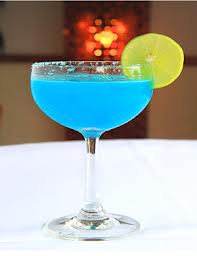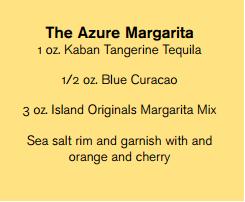
To Canadians, the mention of tequila inspires flashbacks of an all-inclusive vacation in Mexico with a delicious agave induced hangover. To others itâs simply a shot that gets thrown back with a lick of salt and a squeeze of citrus fruit to kill the after taste. One way or the other, this spirit has consolidated its place within our drinking culture. Nonetheless, the knowledge about it, itâs poor at best. Well, that is about to change, just keep on reading
Tequila is one of the more versatile spirits. Itâs diverse and its great depth of flavour makes it a natural ingredient for cocktails. Despite a massive worldwide tequila shortage in 2000 and the resulting increase in price as supplies diminished, tequila remains one of the premier spirits on any bar south of the border. While vodka still reigns supreme as the number one spirit sold, the cosmopolitan falls light years away to the margarita which has been one of the the worldâs most popular cocktails for years now.
Tequila is such a phenomenon that there are upscale tequila around the globe: from New York City to London, to Hong Kong you will find  bars boasting tequila lists with 300-400 brands,  priced in the stratospheric range of a great single-malt scotch. As a rule of thumb, a good tequila venue should have a decent collection of quality tequilas, in particular those of the 100% agave variety and a staff trained accordingly to assist the customers with their choice, as well as to delight them with the top tequila cocktails every time.
In Canada, the presence of government controlled liquor stores limits the selection of tequilas on offer, which results in most provinces having  only a few dozen tequilas available for sale.
To simplify things, here are a few tequila facts to dispel the rumours.
Tequila is usually bottled in one of five categories. Only the first two should be used to mix cocktails
- Blanco “white” or plata “silver” â not aged white spirit.
- Oro “gold” â unaged or young, which means that caramel, fructose, glycerin and wood flavoring can be added to resemble aged tequila.
- Reposado “rested” â aged a minimum of 2 months but less than a year in oak barrels.
- Añejo “aged” or “vintage” â aged minimum one year, but less than three years in oak barrels.
- Extra añejo “extra aged”â aged minimum three year in oak barrels
One reason margaritas may have never enjoyed the same success in Canada as they have in the south is due to the fact that most bartenders rim the glass with table salt and the three tiered rimmer âdip and dunkâ method. When youâre rimming a margarita glass remember that the rimming ingredient belongs only on the outside edge of the glass, not on the inside, where it will likely become part of the cocktail. Moisten the outside of the glass with a lime and roll the moistened surface in coarse sea salt or kosher salt for your glass rimmer. Itâs the easiest way to ensure that your glass is not overloaded with salt. If you must use the dip and dunk method, please do yourself and your guest a favour and wipe the excess off of the inside of the glass with a beverage napkin before you pour the cocktail in and inadvertently create a salt water margarita.
To get you into the world of Tequila and Margaritas here is the following recipe using Kaban, tangerine infused tequila. The synergy of tangerine with the larahas orange flavour of Blue Curacao is a natural match that is appealing to both the eye and the palate.
Made correctly, the tangerine-infused azure margarita will sell itself. With guests rightly demanding more from their bartenders and their dining and drinking experience, itâs important to make sure your staff is well trained.
Until next time keep âraising the barâ in your establishment, because if you donât, someone else will!

This entry was posted in Mixology, Raising the Bar. Bookmark the
permalink. Both comments and trackbacks are currently closed.
A crash lesson in Tequila and Margaritas
To Canadians, the mention of tequila inspires flashbacks of an all-inclusive vacation in Mexico with a delicious agave induced hangover. To others itâs simply a shot that gets thrown back with a lick of salt and a squeeze of citrus fruit to kill the after taste. One way or the other, this spirit has consolidated its place within our drinking culture. Nonetheless, the knowledge about it, itâs poor at best. Well, that is about to change, just keep on reading
Tequila is one of the more versatile spirits. Itâs diverse and its great depth of flavour makes it a natural ingredient for cocktails. Despite a massive worldwide tequila shortage in 2000 and the resulting increase in price as supplies diminished, tequila remains one of the premier spirits on any bar south of the border. While vodka still reigns supreme as the number one spirit sold, the cosmopolitan falls light years away to the margarita which has been one of the the worldâs most popular cocktails for years now.
Tequila is such a phenomenon that there are upscale tequila around the globe: from New York City to London, to Hong Kong you will find  bars boasting tequila lists with 300-400 brands,  priced in the stratospheric range of a great single-malt scotch. As a rule of thumb, a good tequila venue should have a decent collection of quality tequilas, in particular those of the 100% agave variety and a staff trained accordingly to assist the customers with their choice, as well as to delight them with the top tequila cocktails every time.
In Canada, the presence of government controlled liquor stores limits the selection of tequilas on offer, which results in most provinces having  only a few dozen tequilas available for sale.
To simplify things, here are a few tequila facts to dispel the rumours.
Tequila is usually bottled in one of five categories. Only the first two should be used to mix cocktails
One reason margaritas may have never enjoyed the same success in Canada as they have in the south is due to the fact that most bartenders rim the glass with table salt and the three tiered rimmer âdip and dunkâ method. When youâre rimming a margarita glass remember that the rimming ingredient belongs only on the outside edge of the glass, not on the inside, where it will likely become part of the cocktail. Moisten the outside of the glass with a lime and roll the moistened surface in coarse sea salt or kosher salt for your glass rimmer. Itâs the easiest way to ensure that your glass is not overloaded with salt. If you must use the dip and dunk method, please do yourself and your guest a favour and wipe the excess off of the inside of the glass with a beverage napkin before you pour the cocktail in and inadvertently create a salt water margarita.
To get you into the world of Tequila and Margaritas here is the following recipe using Kaban, tangerine infused tequila. The synergy of tangerine with the larahas orange flavour of Blue Curacao is a natural match that is appealing to both the eye and the palate.
Made correctly, the tangerine-infused azure margarita will sell itself. With guests rightly demanding more from their bartenders and their dining and drinking experience, itâs important to make sure your staff is well trained.
Until next time keep âraising the barâ in your establishment, because if you donât, someone else will!